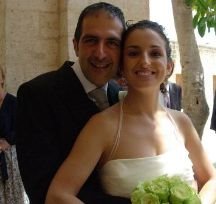The Hiroshima Peace Memorial Park is a daunting experience that should not be missed by anyone travelling to Japan. It is an unusual tourist attraction. The sober monuments and the museum can inflict feelings of sadness and anger and at the same time wonder at how a city faced with such destruction could rise from the ashes in such a short time.
I was prepared to expect the worst from a friend of mine who recommended the place immediately as soon as we had decided to come to Japan. Clearly not honeymoon material he said but a must visit. And indeed he was right.
I write this a day after since this has given us time to discuss, to reflect on the horrors of war and especially nuclear weapons.
The atomic bomb was dropped on Hiroshima by the American forces at 8.15 am on 6th August 1945. Tens of thousands of people were killed insantly, 140.000 had died by the end of the year and the death toll rose to 200.000 in the following years as a resut of after-effects.
You enter the park and the first thing you see is the A-Bomb Dome, a haunting reminder of the destructive forces that were unleashed on the city. The former Industrial Promotion Hall designed by a Czech architect stood close to the hypocenter, or ground zero. The occupants of the building were killed immediately. But its twisted girders, gaping holes and piles of rubble have been preserved as a UNESCO World Heritage Site. Not something to be proud of like other World Heritage Sites but rather a shocking reminder of the destruction that is caused by wars and in particular weapons of mass destruction.
We miss the Peace Bell at the other side of the entrance, which we will see at the very end and head to the Children's Peace Monument surrounded by paper cranes. This monument depicts a girl with outstreched hands. A crane, the Japanese symbol of longevity and happiness passed above her. The work refers to the story of a child victim of the bomb who believed that if she could make 1,000 paper cranes she would survive. Sadako, two-years old when the bomb was dropped, seemingly escaped unharmed. But she developed leukaemia when she was 10 as a direct effect of the radiation caused by the A-Bomb. She continued to fold more paper cranes even after reaching 1,000 but died at the age of 12. Till today, children around Japan still fold cranes and send them to the Children's Peace Monument where they are freshly hung.
It was indeed a very moving moment to see a group of young Japanese school-children sitting in silence as a Japanese girl read something I could not understand. The concentration on the faces of the children was impressive and when she finished reading, some children were in tears, more than 50 years after the event.
Across the rod is the Flame of Peace, which will be extinguished only when all nuclear weapons have been eliminated from the earth. Being the cynic I am, I have titled this flame on flickr the eternal flame. I hope that I am proved wrong. Hiroshima's aim is that all such weapons would have been destroyed by 2020.
Adjacent to it is the Cenotaph, designed by Tange Kenzo, for the victims of the bomb. It contains the names of all those who died together with an inscription that reads "Rest in peace. We will never repeat the error."
The centrepiece of the park is the Peace Memorial Museum which graphically explains the consequences of the bomb on the city by means of photos, videos and personal belongings of victims.
The most impressive items were a mangled tricycle and the imprint of a dark shadow on the granite steps of the Sumitomo Bank building - the sole remains of someone who was waiting for the bank to open in the morning. Another impressive item is a watch which survived and which still depicts the time as 8.15am. There are many deformed glass bottles which did survive the immense heat unleashed by the bomb which exploded some 580 metres on top of its target.
There are shocking exhibits like a letter by Albert Einstein to President Roosevelt urging him to study the feasibility of nuclear energy or a letter by the Treasury to the President of the United States stating that a lot of money was being spent on the atomic bomb and that if it turned out to be unjustified it would result in a serious investigation.
Outside the musuem are the so-called Phoenix trees which were growing 1.5km from the hypocenter and which have been transplanted here since. They are said to have given the city hope since it was said that nothing would grow for 75 years but they were sprouting leaves months after the A-Bomb.
The exhibits in the museum are endless. Letters sent by every mayor of Hiroshima condemning any testing of nuclear weapons which takes place, photos of the rebirth of the city, stories of victims, children who lost all their families. Indeed an eye-opener.
Like the engraving on the tomb under the Cenotaph states: the hope is that the world will have learnt its lesson and this will never happen again.
Wednesday, May 16, 2007
Subscribe to:
Post Comments (Atom)

No comments:
Post a Comment